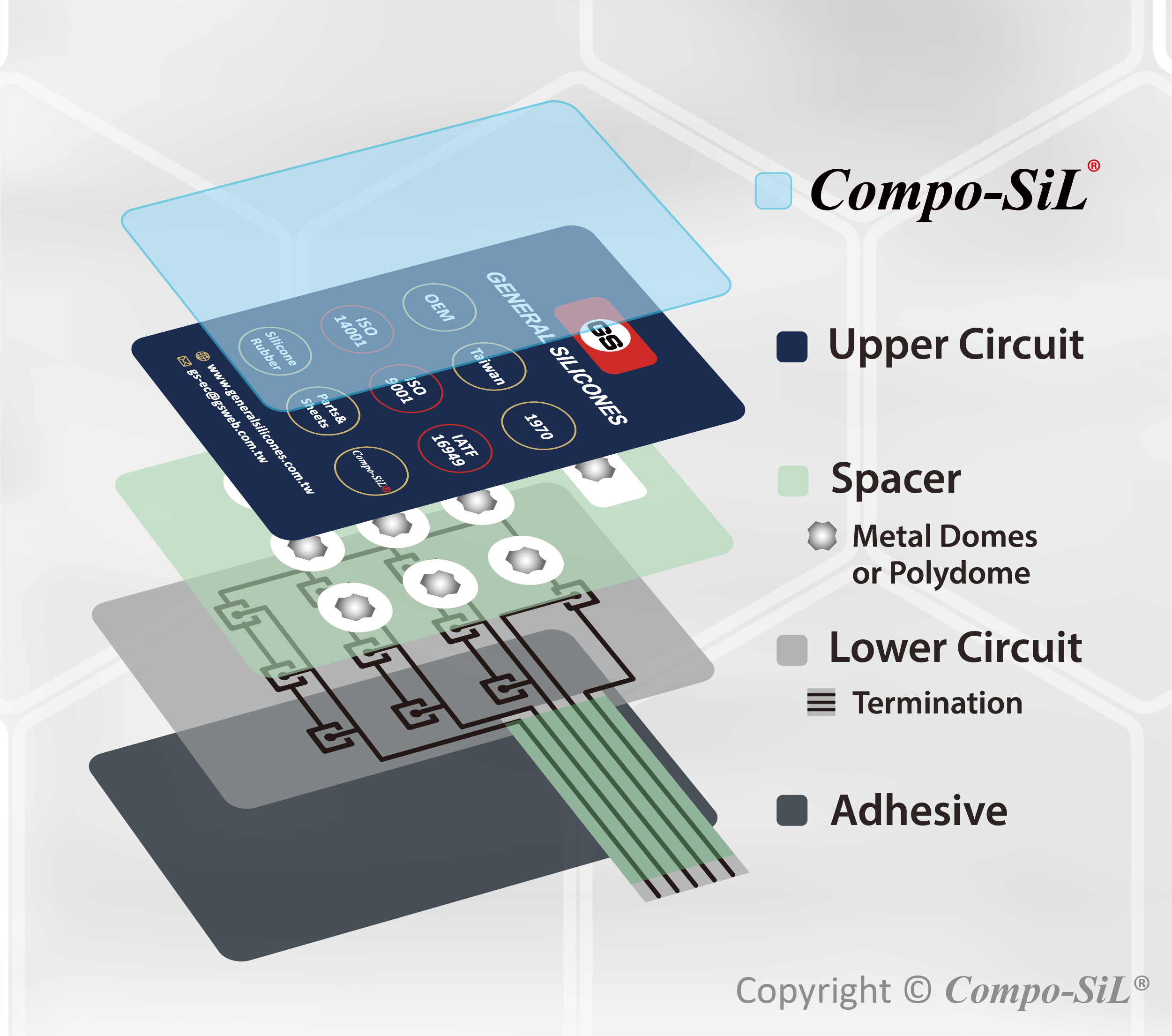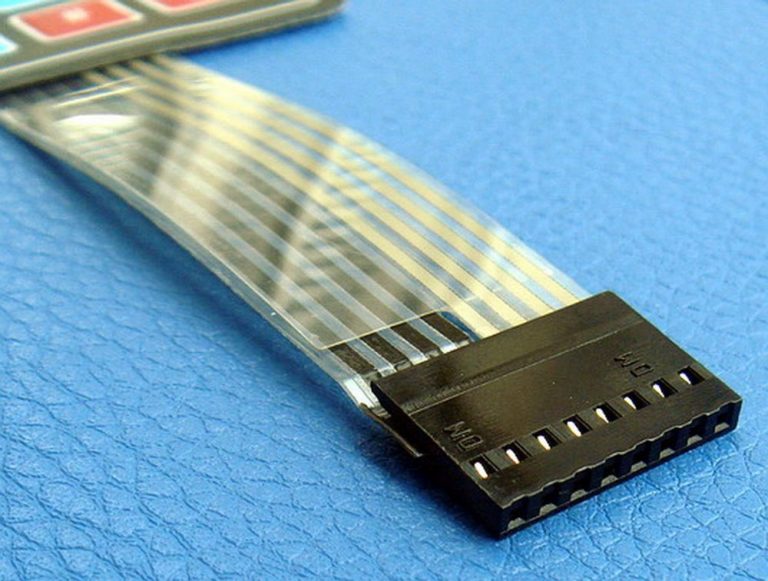Comprehending the Importance of Membrane Switches in Interface
Membrane buttons are essential parts in the style of efficient customer interfaces, facilitating not just functionality but likewise improving visual allure and user interaction. As we check out the various benefits and future patterns linked with Membrane modern technology, it comes to be clear that these buttons are a lot more than just parts; they represent a convergence of development and usefulness.
What Are Membrane Switches?

The spacer layer, which includes glue homes, enables the separation of the circuit layer from the overlay, guaranteeing that the switch remains in a non-activated state up until pressed. When stress is applied to the overlay, it compresses the spacer layer, linking the gap and completing the circuit in the underlying layer. This style not only minimizes the physical area required for traditional mechanical switches but also improves the toughness of the gadget, as Membrane buttons are typically immune to dirt, moisture, and other environmental elements.
Typically located in applications ranging from consumer electronics to medical devices, Membrane buttons are essential to contemporary innovation, providing a easy to use and efficient interface that straightens with modern design requirements.
Benefits of Membrane Buttons
While numerous button innovations exist, Membrane Switches offer distinct benefits that make them particularly desirable in different applications. One of the primary benefits of Membrane buttons is their compact design, which permits space-saving applications in gadgets where realty is restricted. Their thin profile not just improves visual charm however likewise assists in light-weight building.
Another substantial advantage is their resistance to environmental elements. Membrane switches are usually secured against wetness, dirt, and pollutants, making them optimal for use sought after environments, such as clinical devices and industrial tools. This durability extends the lifespan of the button, minimizing maintenance prices and enhancing integrity.
In addition, Membrane buttons can be customized to satisfy certain style needs, integrating special graphics and colors that improve user communication. Their responsive comments options can additionally be tailored to supply a gratifying user experience. Furthermore, Membrane switches are cost-efficient, specifically in high-volume applications, as they can be generated successfully.
Applications in Numerous Industries

In the customer electronics industry, Membrane buttons are common in devices such as microwaves, cleaning devices, and remotes. Their responsive feedback and visual options enhance individual experience while supplying a smooth, modern-day appearance. Additionally, automobile suppliers utilize Membrane switches in control panel controls and infotainment systems, where area is limited, and user engagement is vital.
Moreover, the industrial market leverages Membrane switches in control panels for equipment and devices, enabling for intuitive operation in often extreme environments. Their resistance to chemicals and moisture ensures durability and dependability in these applications. Overall, the adaptability of Membrane Switches contributes considerably to their extensive use, making them vital in numerous technological domains.
Style Considerations for Membrane Buttons

When developing Membrane buttons, several crucial considerations should be considered to make sure ideal functionality and user experience. The choice of materials go is crucial; picking sturdy, premium substratums can boost the button's durability and resistance to environmental elements such as moisture and temperature level changes.
Secondly, the layout of the visuals overlay must prioritize clarity and convenience of use. Symbols and text need to be clear, and the layout should facilitate instinctive interaction (membrane switches). Additionally, responsive comments is vital; incorporating a responsive dome or various other mechanisms why not check here can boost the individual experience by providing physical verification of activation
Another vital element is the switch's electric performance. Designers have to make sure that the conductive traces are effectively developed to lessen resistance and avoid signal interference. This entails examining the needed actuation pressure and guaranteeing compatibility with the digital components they will interface with.

Future Fads in Membrane Innovation
As technology proceeds to advance, Membrane buttons are positioned to advance substantially, driven by developments in products and producing methods. One emerging pattern is the consolidation of innovative products, such as conductive inks and adaptable substrates, which boost longevity and lower the overall weight of Membrane buttons. These products not only improve the tactile reaction yet also permit the design of buttons that can hold up against harsher ecological conditions.
Additionally, the combination of touch-sensitive modern technologies is transforming traditional Membrane Switches right into even more interactive user interfaces. Capacitive touch sensing units installed within Membrane switch panels can give a much more intuitive and responsive user experience, straightening with the growing need for sleek, contemporary styles in consumer electronic devices.
Additionally, advancements in printing strategies, such as electronic and 3D printing, enable quick prototyping and modification of Membrane buttons. This adaptability enables manufacturers to react quicker to market demands and customer preferences.
Last but not least, sustainability is ending up being a significant focus, with manufacturers checking out environment-friendly products and procedures. As these trends unfold, the future of Membrane innovation assures boosted functionality, visual Recommended Reading appeal, and environmental duty, strengthening their role in innovative interface throughout different industries.
Conclusion
In final thought, Membrane Switches stand for a vital element in the layout of individual interfaces, incorporating performance with aesthetic adaptability. As developments in modern technology continue, the development of Membrane buttons is anticipated to further improve customer interfaces, driving innovation and enhancing functionality in an increasingly complex technological landscape.
Membrane buttons are integral elements in the layout of reliable customer interfaces, assisting in not just performance however also enhancing aesthetic allure and individual interaction.Membrane Switches offer as a crucial element in numerous user interfaces, helping with a seamless interaction between individuals and digital tools.While numerous switch innovations exist, Membrane Switches deal distinct advantages that make them especially desirable in numerous applications.Moreover, Membrane switches can be personalized to satisfy specific design needs, including one-of-a-kind graphics and shades that improve user interaction.In conclusion, Membrane Switches represent a vital component in the design of user interfaces, incorporating capability with aesthetic versatility.